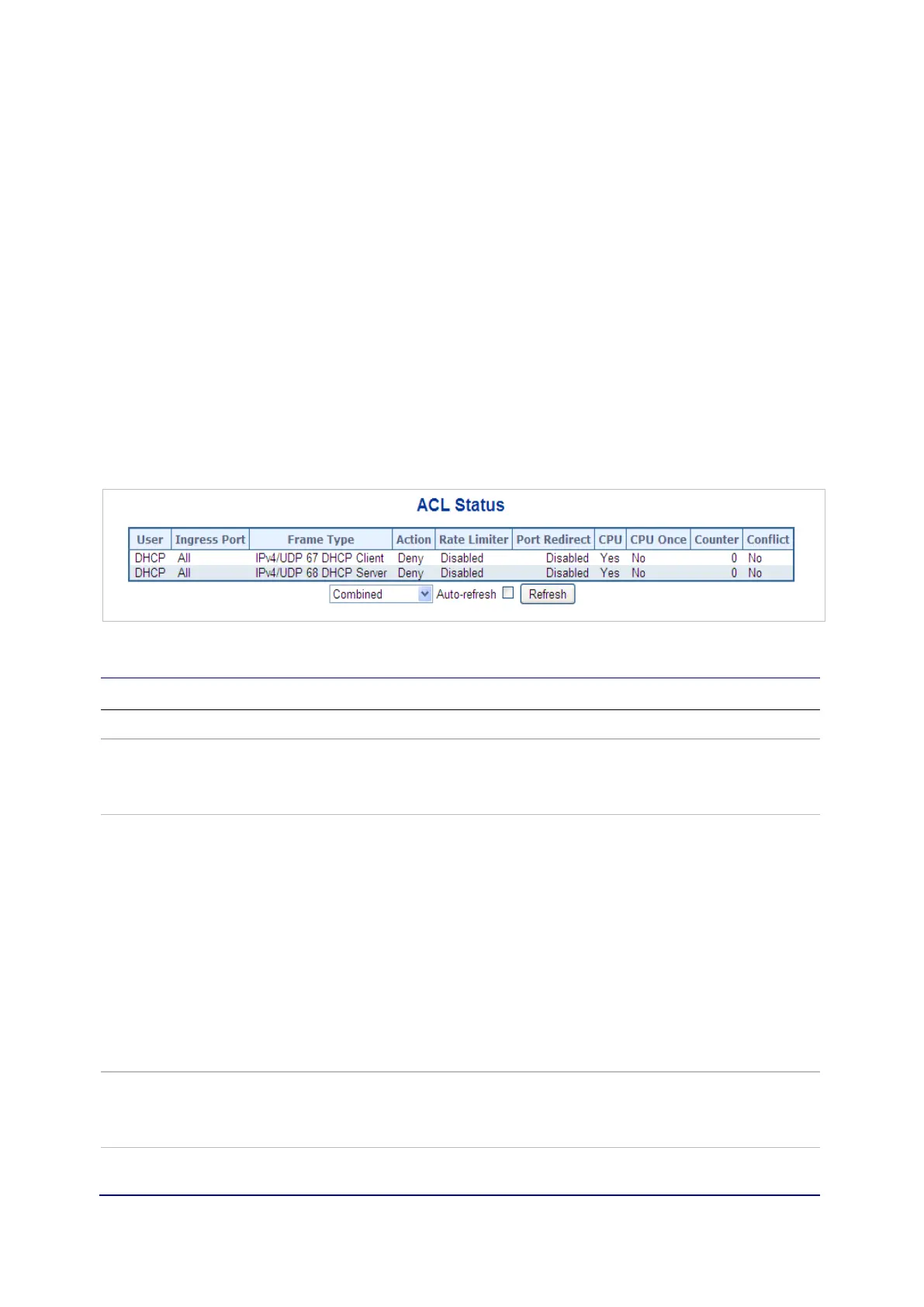Chapter 4: Web configuration
196 NS3552-8P-2S-V2 User Manual
services that are available on a host or server, each with a list of hosts or servers
permitted or denied to use the service. ACLs can generally be configured to control
inbound traffic and, in this context, they are similar to firewalls.
ACE is an acronym for Access Control Entry. It describes access permission
associated with a particular ACE ID.
There are three ACE frame types (Ethernet Type, ARP, and IPv4) and two ACE actions
(permit and deny). The ACE also contains many detailed, different parameter options
that are available for individual applications.
ACL status
The Voice VLAN OUI Table page shows the ACL status by different ACL users. Each
row describes the ACE that is defined. A conflict occurs if a specific ACE is not applied
to the hardware due to hardware limitations. The maximum number of ACEs is 512 on
each switch.
The page includes the following fields:
Object Description
User Indicates the ACL user.
Ingress Port Indicates the ingress port of the ACE. Values include:
All: The ACE matches all ingress ports.
Port: The ACE matches a specific ingress port.
Frame Type Indicates the frame type of the ACE. Values are:
Any: The ACE matches any frame type.
EType: The ACE matches Ethernet Type frames. Note that an Ethernet
Type based ACE will not get matched by IP and ARP frames.
ARP: The ACE matches ARP/RARP frames.
IPv4: The ACE matches all IPv4 frames.
IPv4/ICMP: The ACE matches IPv4 frames with ICMP protocol.
IPv4/UDP: The ACE matches IPv4 frames with UDP protocol.
IPv4/TCP: The ACE matches IPv4 frames with TCP protocol.
IPv4/Other: The ACE matches IPv4 frames, which are not ICMP/UDP/TCP.
IPv6: The ACE matches all IPv6 standard frames.
Action Indicates the forwarding action of the ACE.
Permit: Frames matching the ACE may be forwarded and learned.
Deny: Frames matching the ACE are dropped.
Rate Limiter Indicates the rate limiter number of the ACE. The allowed range is 1 to 16.
When Disabled is shown, the rate limiter operation is disabled.

